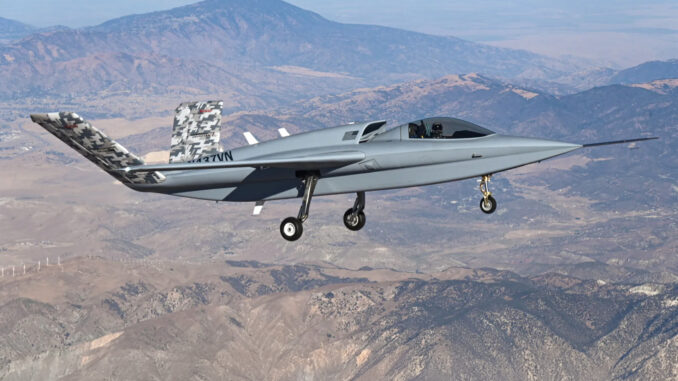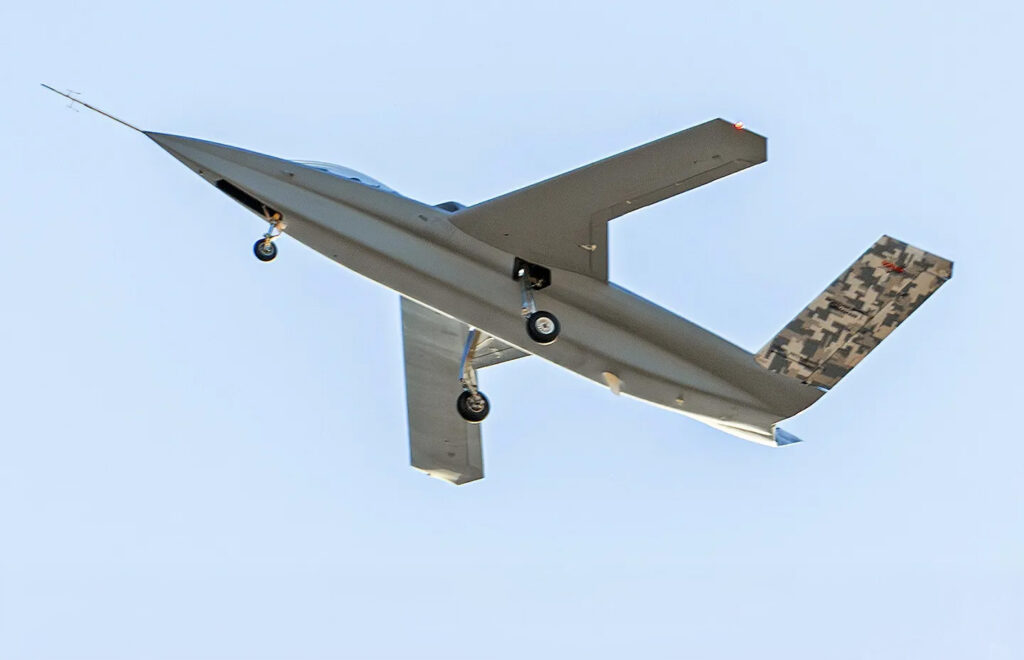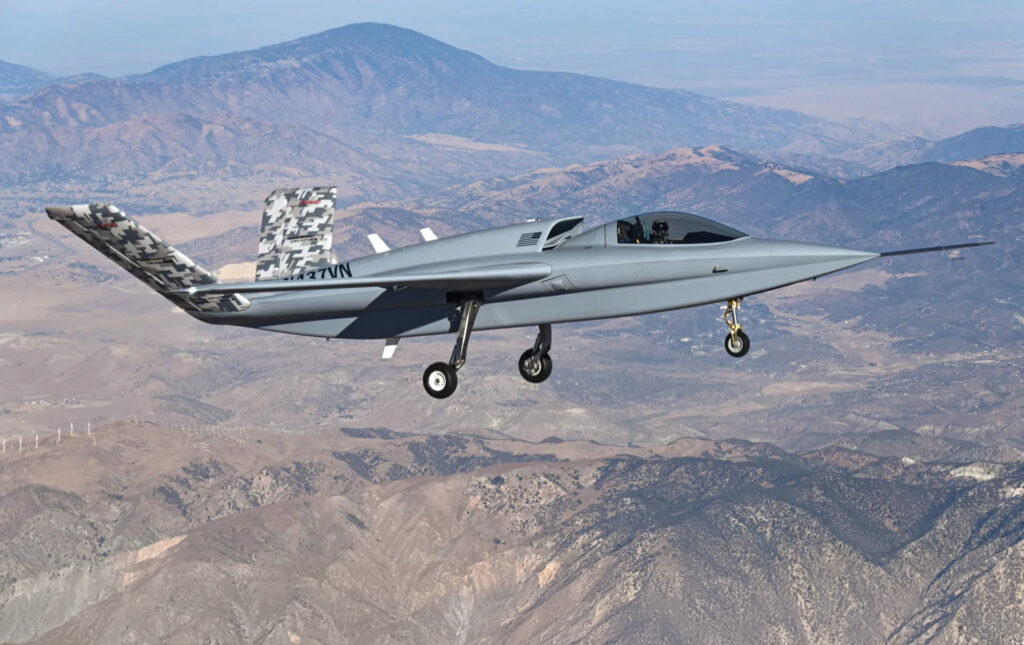
Northrop Grumman’s Vanguard drone makes its first flight with a cockpit, promising advanced military capabilities. Technical details and challenges.
The 437 Vanguard, a combat drone developed by Scaled Composites, a subsidiary of Northrop Grumman, has made its first public flight. Initially designed for collaborative combat missions (CCM), this UAV has an optional piloted configuration, facilitating flight tests and operational use. Powered by a Pratt & Whitney 535 engine, it has a range of 5,556 km and can carry up to 907 kg of payload, including AIM-120 air-to-air missiles. This development is part of an advanced digital engineering strategy, reducing costs and production times.

An advanced prototype for collaborative combat missions
The 437 Vanguard represents a major advance in the development of combat UAVs, with significant implications for the US armed forces. Designed for Collaborative Air Combat (CAC) missions, this UAV is intended to operate as a ‘loyal wingman’, assisting piloted aircraft in complex missions. With a range of 5,556 kilometres (3,000 nautical miles) and a cruising speed of Mach 0.8, the Vanguard is capable of carrying out long-duration missions at high speeds, making it ideal for operations in hostile environments.
The integration of a 907-kilogram internal payload enables the 437 to carry a variety of equipment, including detection systems and weapons such as the AIM-120 air-to-air missile. This payload capacity, combined with an unobtrusive design, thanks in particular to its semi-trapezoidal fuselage and swept-back wings, makes it a strategic asset for reconnaissance or strike missions.
Integration of a piloted configuration for enhanced testing
One of the major innovations of the 437 Vanguard is its optional piloted configuration. This UAV has been designed with a cockpit, allowing flexible operation according to operational needs. This feature is particularly advantageous for flight test phases, where the presence of a pilot can simplify data collection and system validation in real-life conditions.
In addition, this configuration also allows the drone to be used in regulated airspace, where restrictions on unmanned aircraft can limit its deployment. This pragmatic approach ensures a smoother transition from the development phase to operational use, bypassing the legal and technical constraints often associated with fully autonomous UAVs.
The impact of digital engineering on the development of the Vanguard
The development of the 437 Vanguard is part of a digital engineering dynamic, an area in which Northrop Grumman has invested heavily. Thanks to advanced digital tools, the Vanguard design, assembly and test process has been considerably optimised. For example, the use of the ‘Digital Pathfinder’ digital ecosystem has reduced engineering costs and re-design times to less than 1%, compared with 15-20% using traditional methods.
This digital approach has also enabled high-fidelity models to be validated prior to ground and flight testing, minimising risk and reducing physical testing requirements. The application of advanced manufacturing techniques, such as plasma arc energy deposition for the production of titanium parts, illustrates Northrop Grumman’s ability to integrate cutting-edge technologies to improve the quality of early production runs and reduce the need for rework.
Implications for the defence industry and military operations
The introduction of the 437 Vanguard into the military arsenal could have a significant impact on future operations. Its ability to operate as an autonomous or manned UAV offers unrivalled flexibility for a variety of missions, from reconnaissance to direct engagement. This versatility, combined with easy integration into existing defence networks, makes it a potentially decisive force multiplier.
In addition, the success of digital engineering applied to the Vanguard could serve as a model for the future development of air platforms, reducing development costs and speeding up the introduction of military aircraft into service. This strengthens Northrop Grumman’s competitiveness in a market where technological innovation is a key differentiator.

Development and export prospects
As the 437 Vanguard continues to be tested and optimised, the export prospects for this advanced UAV are becoming clearer. The capabilities offered by this aircraft meet growing needs not only within the US Air Force, but also with international allies seeking to modernise their air forces. The potential integration of the Vanguard in joint operations with manned aircraft could strengthen international military cooperation, particularly in contexts where interoperability and flexibility are essential.
War Wings Daily is an independant magazine.